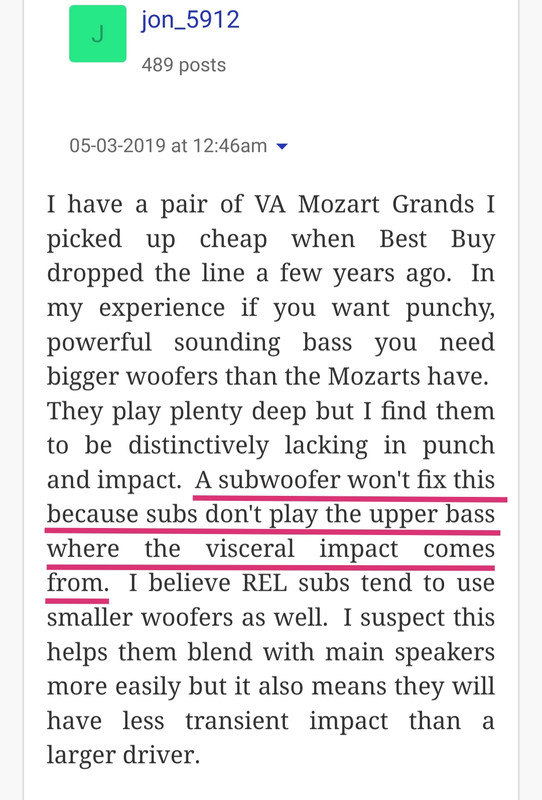@kingharold , now imagine 8 of those in one room.
Since I build my own subwoofers in a rather extravagant shop I have the capability to do things others can not. Still, there are some excellent subwoofer kits available and many SOTA drivers available. These are not that difficult to build and can save you piles of money.
This really is not that complicated. A sub enclosure has to be extremely stiff, heavy and non resonant. With DSP and room control porting has become a thing of the past. You limit your low end extension that way. The only other spec that matters is the volume of the enclosure but even if you are off a little, a powerful amp and DSP have you covered. With an outboard crossover you can use passive subs and separate amps. I personally do not like amps in speakers. You can easily do a 4 woofer system for the price of two commercial powered subs if not less. Making a subwoofer look good is the hard part. I tell people to cover them with equipment carpet if they do not have finish facilities.
With a symmetrical sub array and accurate phase and time alignment you shoot yourself in the foot not taking the crossover up to at least 100 Hz. I ran 125 Hz with my old speakers. With the subs digitally matched you would never know they were there until you turned the volume up too high. A good test is, you should be able to switch the woofers in an out and not hear any difference on a Peter, Paul and Mary album played at moderate volume 80-85 dB. Anything with a bass drum will immediately announce the subwoofers. Paradoxically if you use just a low pass filter at 40 Hz there won't be any difference either but the end results are night and day.
I'm listening to Shostakovich's 10th at this moment at only 73 dB and the bass drum is rolling off me like an ocean wave even at this low volume.


